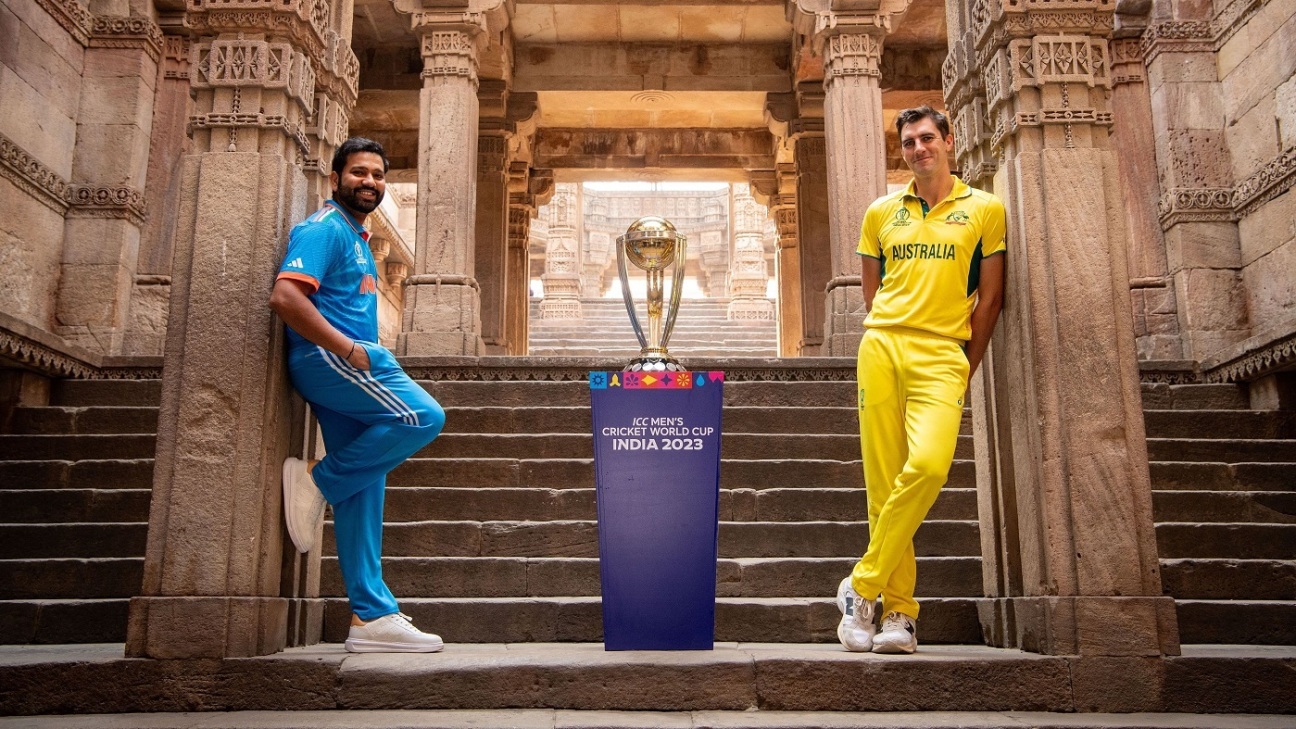Keys to the World Cup final: Win the powerplay, win the game?

Credit to Author: Sidharth Monga| Date: Sat, 18 Nov 2023 07:29:02 EST
The two fastest-scoring teams in the powerplay, who also happen to be the most miserly bowling sides in the powerplay, have made it to the 2023 World Cup final. As we had anticipated at the start of the tournament , it has been a World Cup for frontrunners. India have been better than Australia in the first ten overs – scoring at 6.87 per over against Australia’s 6.55, conceding 4.34 per over to Australia’s 4.75 – which is part of the reason they start the final as favourites. Here’s what the teams can do tactically to enhance their advantage in Ahmedabad on Sunday:
Open the bowling with Mohammed Shami. Ahmedabad has had little new-ball movement so get Shami cracking early against Australia’s left-hand openers. Shami to left-hand batters in this World Cup so far: 52 balls, 32 runs, eight wickets. He is India’s best bet of exploiting Travis Head’s weakness outside off stump. He is also a master of the around-the-wicket angle that troubles David Warner, who has scored 117 runs off 130 deliveries from Jasprit Bumrah without getting out to him in ODIs. Also, Bumrah in powerplay this World Cup: 3.13 an over.
Australia’s bowlers have been miserly in the early exchanges but they haven’t picked up as many wickets as they would have wanted. To be fair, they have hardly played in conditions in which the new ball has moved. The day it moved, they had South Africa 23 for 4 in the semi-final. However, Ahmedabad is almost certain to test their new-ball quicks. Josh Hazlewood has been exemplary with his lengths, but Mitchell Starc can be expensive if the ball is not moving. Australia must consider switching to Pat Cummins as early as the third over if there is no swing for Starc. Cummins-like hard lengths have worked in Ahmedabad.
Hazlewood’s immaculate lengths will pose the early threat for India. He found just a little seam movement in the league match in Chennai and had India 2 for 3 in no time. He can hit that knee-roll length again and again. Rohit Sharma won’t want to be a stationary target, so don’t be surprised if he comes down the track after one over of Hazlewood to hit him off his length. It will be a fascinating contest: Australia looking to pin Rohit to his crease, Rohit looking to mess with their lengths.
Australia just need to have a great day in the powerplay. India’s bowlers will not be put off their lengths that easily. Australia will hope that whatever has worked for Warner against Bumrah in the past will keep working on Sunday. And that a couple of early risks pay off for Head.
Whatever temptation India might have had of replacing Mohammed Siraj with R Ashwin – his only match this World Cup was against Australia – will take a back seat because of Hardik Pandya’s absence. They can’t risk going in with just two fast bowlers.
Australia might be tempted to play Marcus Stoinis, given how Marnus Labuschagne has struggled against left-arm spin, but with their line-up frontloaded with attacking batters, they could find themselves three down in 15 overs. That is why they need two steady batters to ensure Glenn Maxwell‘s point of entry is after 30 overs.
India hold the advantage in this phase as well. Ravindra Jadeja has long been a thorn in Australian flesh and this World Cup has been no different. He dismissed Smith and Labuschagne in the league match, and has gone at only 4.25 an over this World Cup, and 4.18 against right-hand batters. Australia’s Nos. 3 to 7 are all right-hand batters.
Kuldeep Yadav has gone under the radar a little, but still averaged 24.53 with an economy of 4.32 an over in the World Cup. He will be India’s first weapon should any of Australia’s left-hand batters make it out of the powerplay.
Don’t rule out reverse-swing if the square is as dry as it was when India played Pakistan and reversed it. That will also be Australia’s hope because India’s middle order, barring Shreyas Iyer, enjoys good match-ups against their premier spinner Adam Zampa. Maxwell is a bit of an unknown with an impressive economy-rate of 4.72 this World Cup, but expect India’s right-hand batters to try to unsettle him.
The last three World Cup finals have been won by chasing sides, and so have the last four T20 World Cup finals. Not to say it has any bearing on this match, but “runs on the board in a final” might not be much more than a cliché.
Now on to what has a bearing in this match. Three of the four league matches in Ahmedabad this World Cup have been won by chasing sides. Also the two IPL finals. Even when there is no dew, the pitch tends to quicken up and get better for batting under lights, and without the alarming swing and seam as seen at the Wankhede Stadium in Mumbai. The two matches Ahmedabad hosted in November were more competitive, with Australia defending successfully against England and Afghanistan pushing South Africa hard, which might suggest the onset of winter has had some impact. That could mitigate the toss advantage to a certain degree.
Either way, the team that wins the toss might look to chase. In fact that might be Australia’s best chance: contain India in slow conditions in the afternoon and then cash in on a skiddier pitch. Otherwise, India hold the advantage, and a couple of Australians will need to play out of their skins if they bat first.